Want to read more 2022 marketing trends?
Click below for a free PDF version of our overall 2022 marketing trends report.
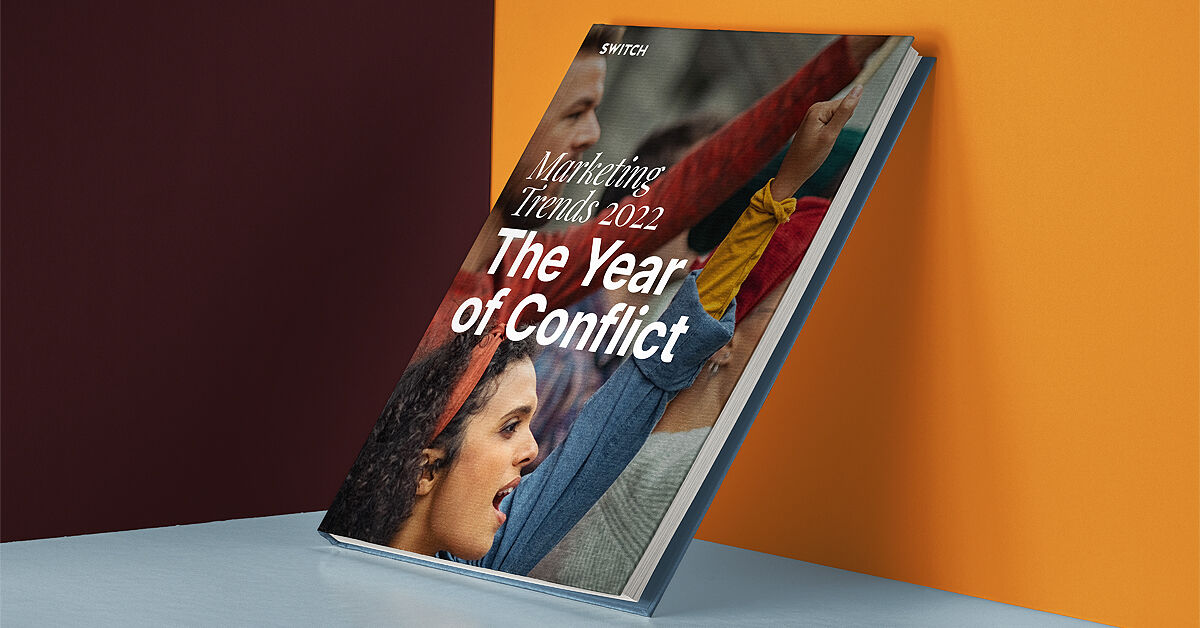
Intro to Social Media Trends 2022
In 2020, the average internet user spent over two hours online.
Daily.
Since then, the line between our digital lives and our real ones has blurred even further.
We’re in the age where you can spot a product on Tiktok, source it off of Facebook or Instagram, and have it delivered to your exact location by an app that’s tied into your Snapchat. The age where you can get your answers crowd-sourced through an app that sets it to music and dances. The age where the world has shrunk to fit into a 9.7 inch screen.
We’re in the age of the social-media-ification of the internet. Over the next 6,000 words, we’ll be going through which social media trends will be taking this a step further in 2022.
Social Media Marketing Golden Rules for 2022
- There are different personas for different socials. Use them.
- Any content above 15 minutes has to be visually compelling, informational, and ideally interactive.
- Bite-sized content is superior to long content in most cases – but not in all cases (this guide is a case in point).
- Pick your influencers carefully and work with them for longer.
- If you don’t engage with your consumers, your consumers won’t engage with you.
- Talk. Post content. Use your social media. Having a beautiful feed you only update once in a blue moon is not a social media presence.
- If you’re going to jump onto a trending hashtag, research what it’s about, or risk getting raked over the coals.
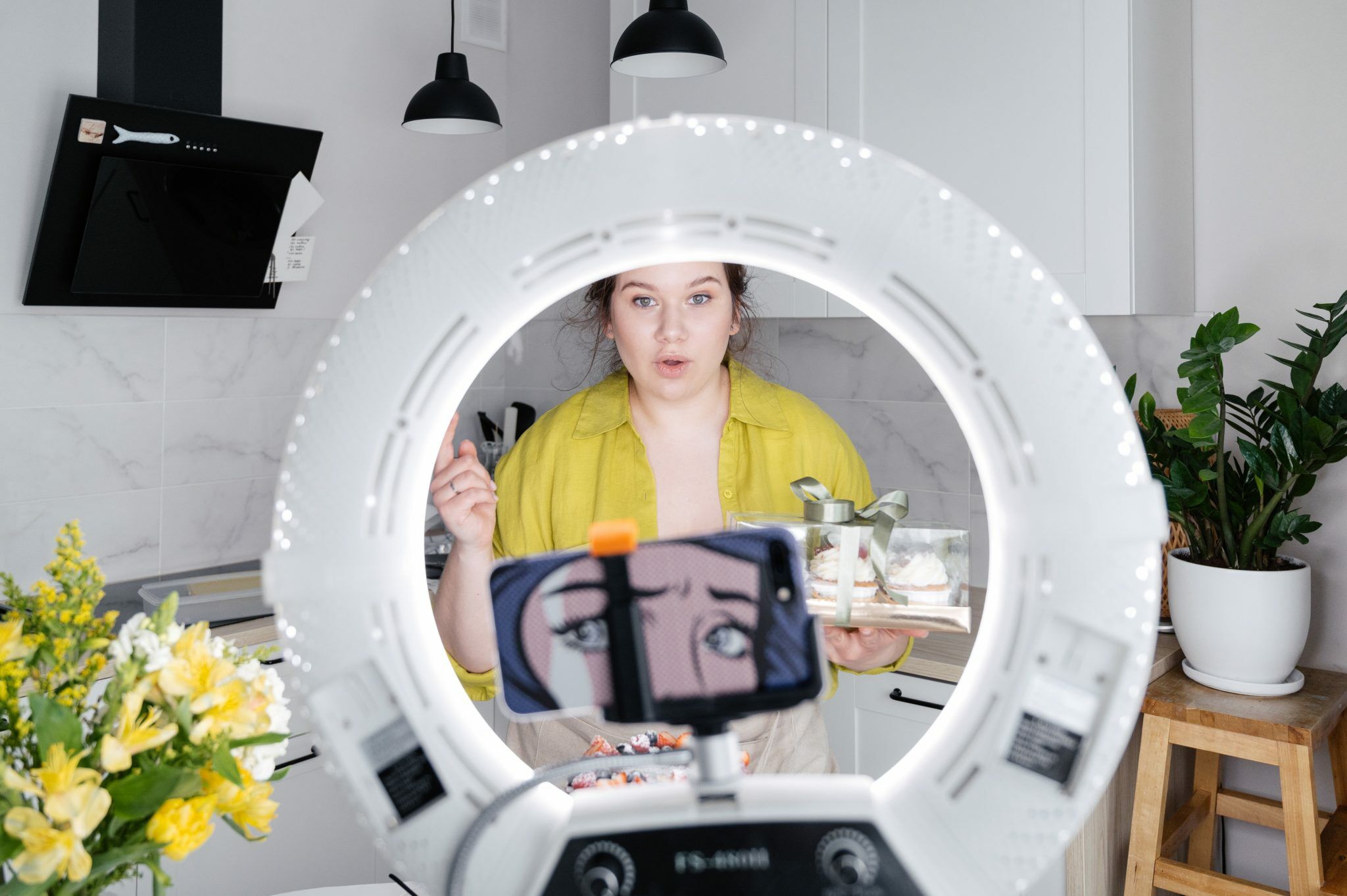
The Internet of Social Media
In the early days of the internet, before social media, there were forums: places on the web where people could create an account and talk. Forums are largely constrained to one topic, and with answers less rapid-fire than what you’d expect on social media – and with a lot less reach.
In the greater scheme of things, social media was always going to happen. That it’s become such a powerhouse is understandable: as the internet got faster and faster, communication needed to keep up.
And thus: social media.
Up until 2019, social media was merely growing.
Once the world went into lockdown, that growth exploded.
The average penetration rate for social media in 2021 was 53.6%.
It’s going to get bigger in 2022.
Here’s what we’re predicting per platform.
Social Media Trend 1: Social Commerce Boom
Statistics
- In 2020, social commerce generated about $475BN in revenue.
- 1 in 3 consumers find new brands on social media.
- Social commerce is set to grow at a CAGR of 28.4% from 2021 – 2028.
Overview
There is at least one product you bought because of social media.
Whether it’s #tiktokmademebuyit, Facebook marketplace, or Instagram’s shop section, social media has gone hybrid. It’s no longer used just to advertise; as more people log onto the web from mobile devices, and the internet becomes increasingly inter-connected, the old ways of e-commerce just aren’t enough.
For brands, opening a store-front on social media is another step towards being ever more accessible, ever more reachable, by their core audience. It opens up opportunities for connection.
It makes marketing, with the right investment, easier.
And it isn’t going to go away. In 2022, social media shopping is going to grow.
Social eCommerce on Facebook
Facebook’s had a pretty rough year: from scandal to rebrand, the company’s been getting raked over the coals by the internet since the Cambridge Analytica scandal – and it’s still the number one most popular social media platform in use. That said, the cracks in Facebook are there, and they’re getting bigger. With companies like Tiktok introducing a whole new idea of bite-sized, high value content that anyone can feasibly put out, Facebook has needed to innovate its product offerings.
With its biggest revenue coming from advertising, you can see where this is going.
Brands thrive on Facebook. As one of the original social medias – the social media to kick off all social medias – brands have had time to figure out how to use Facebook to talk to their audiences, and how to make those audiences listen and engage.
Now the next big step is to make them buy.
Facebook and Instagram are both going to get in on the eCommerce ground next year, with Facebook already making moves to introduce their e-commerce set up into groups. With over 2 billion in e-commerce in 2020, digital shopping and e-commerce is poised to increase as people try and maintain the same level of post-pandemic convenience that they had during and after lockdown.
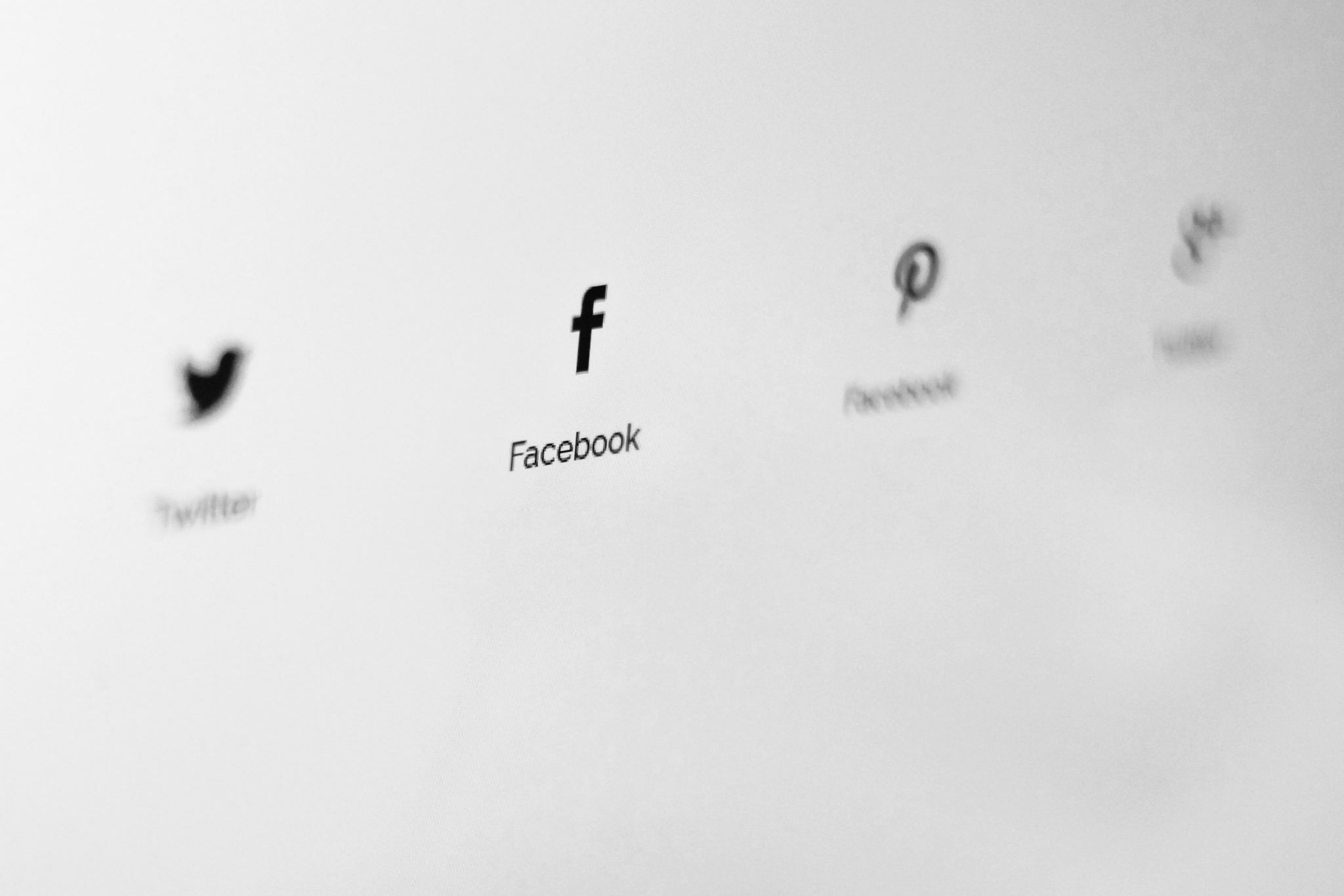
Which brands did Social eCommerce right on Facebook?
La Roche-Posay Vietnam launched a new sun care product using Facebook Creative Shop. By creating an ad that ran prior to the event, La Roche-Posay encouraged viewers interested in the product to RSVP and opt into a notification to alert them when the live shopping event started.
La Roche-Posay’s presenters also encouraged viewers to use a coded hashtag in the comments to trigger a conversation via Messenger that would allow them to purchase the product through messenger.
Over 10,000 viewers tuned into the La Roche-Posay page during the Facebook Live event, and there was a 1.8X increase in return on ad spend and a 77% increase in add to cart.
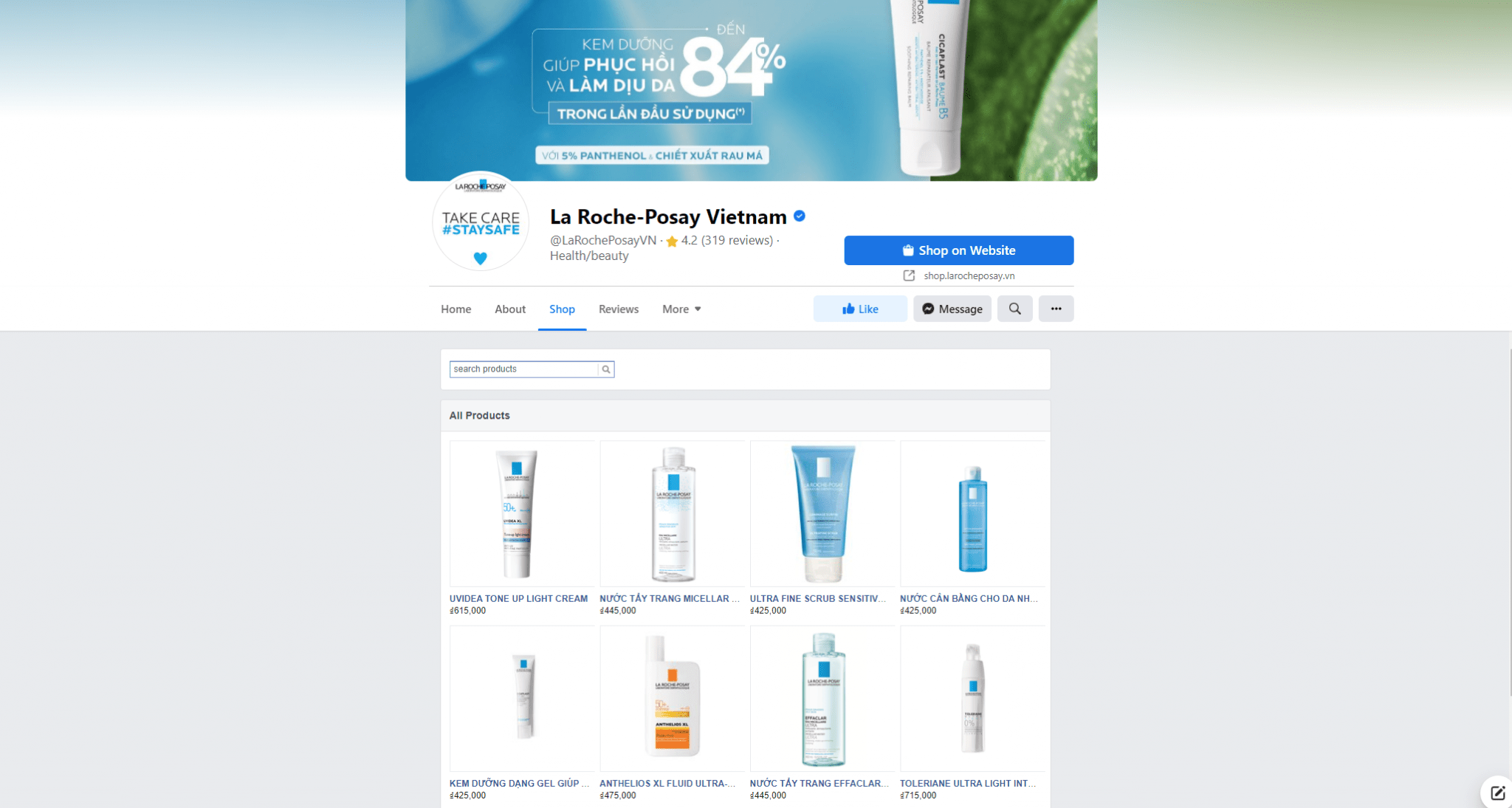
Social eCommerce on Instagram
Instagram is also heading into the eCommerce game, but it’s going to take a little bit longer than Facebook to really start seeing movement. That said, brands that can get in on the ground floor of selling on Instagram can control the conversation – but it has to be a conversion that people want to listen to.
Small business owners and brands with aesthetically-pleasing products are especially going to do well on Instagram. Audiences who are used to seeing beautiful product shots are especially susceptible for Instagram eCommerce, and while Reels are a relatively new addition to Instagram’s lineup, they’ve been slowly climbing in popularity.
What Instagram does better than Facebook is in marketing.
Facebook has the reach, the audiences, and the benefit of being the most popular site on the internet for social media.
Instagram is overall better for brands who want to build a following.
Who did Social Commerce right on Instagram?
GrowUs, a Korean haircare brand, is an online-only brand that needed to create an online shopping experience to encourage brand engagement and sales. It developed video ads that used product features, and created an online store on Instagram where they could learn more about the product before making the ultimate purchase.
There were 3X more purchases per website visits from people who viewed video ads with the product ads, and over 1.7X more content views from website visitors who shopped via video ads.
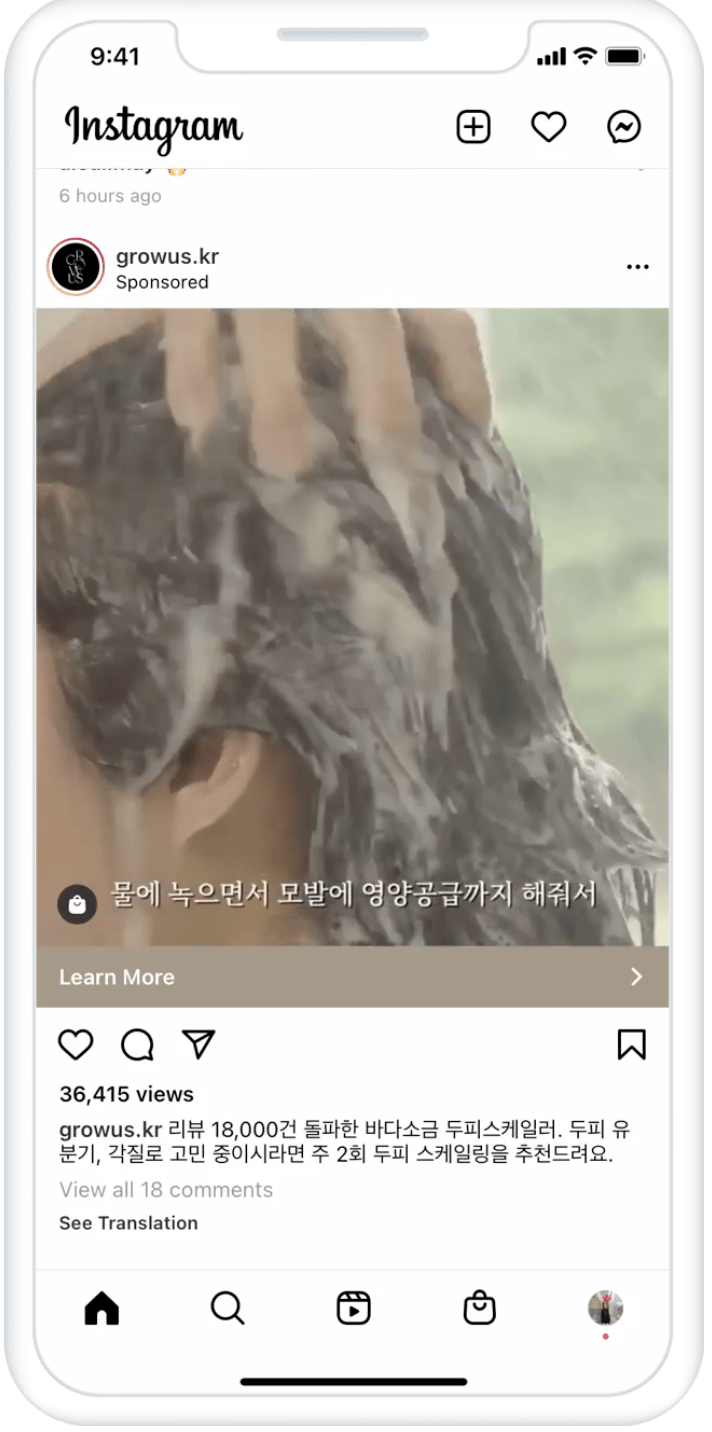
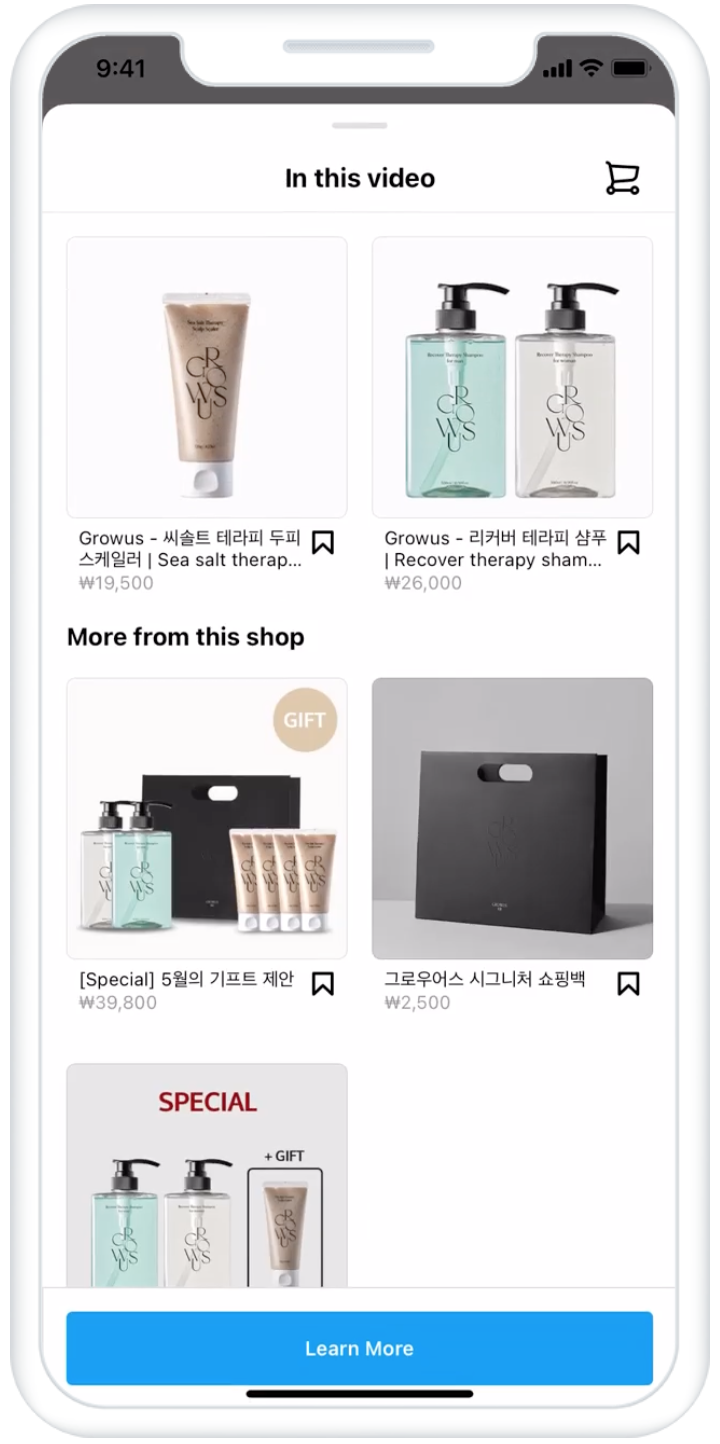
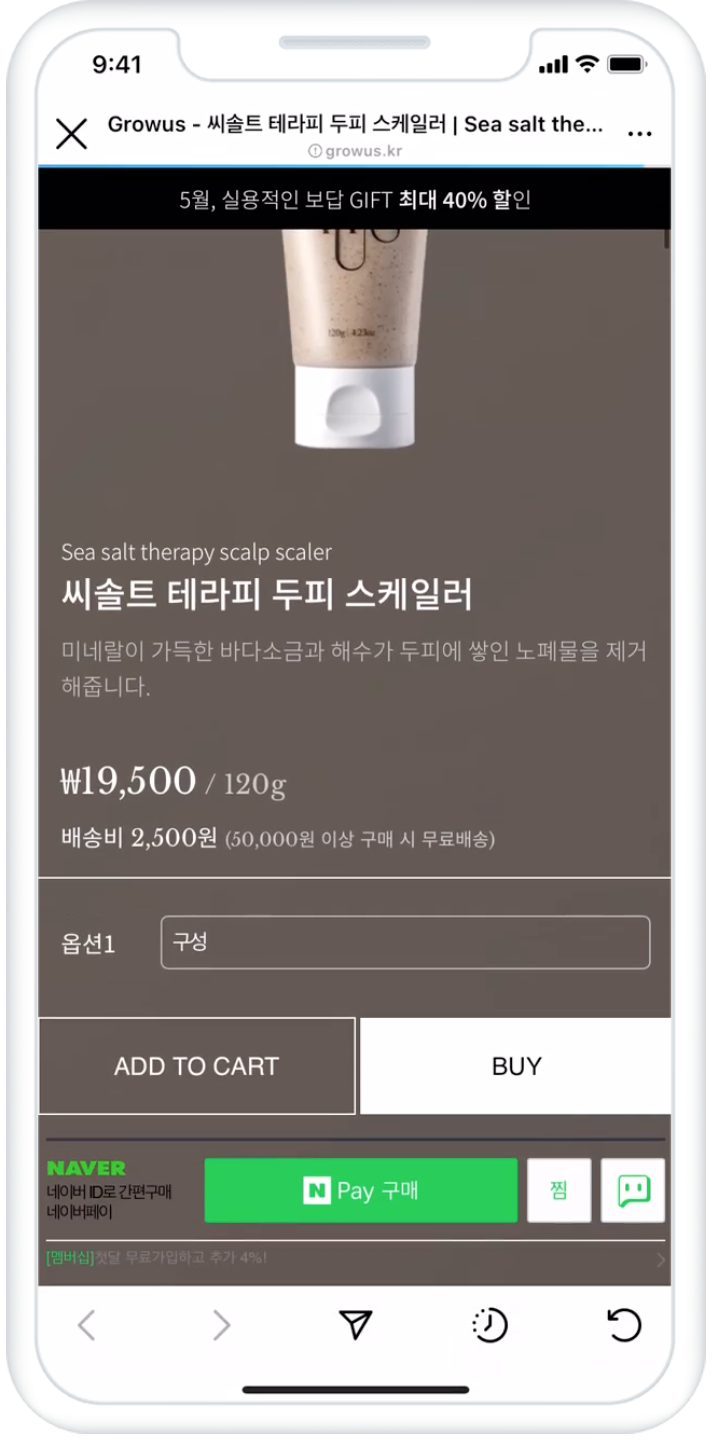
Social eCommerce on TikTok
2020’s breakout pandemic star, Tiktok is a brand dream for e-commerce – but you have to talk the talk. The brands that are going to make it on Tiktok and sell their products need to fold their brand identity into what is popular on Tiktok: catchy jingles, snappy editing, and tongue-in-cheek references.
We’ve seen the effects of Tiktok virality before. Between cult-favourite brands and ‘discoveries’, products or small businesses that make it into #tiktokmademebuyit see their profits go sky-high. With 2022 coming up, and very few other ways for Tiktok to generate other income, we’re predicting that Tiktok is going to lean into its eCommerce and small-business-friendly aspects to create an eCommerce powerhouse for the digitally-savvy.
Who did Social Commerce right on TikTok?
Levi’s, one of the oldest American clothing brands, leveraged its advertising partnership with TikTok to elevate themselves above the COVID-19 lockdown. By using TikTok’s ‘Shop Now’ button, consumers could make purchases through the attached links. Levi’s also pulled in four mega-influencers on the platform to reach users.
It more than doubled its product views, and its digital business is now worth 15% of its total revenue.
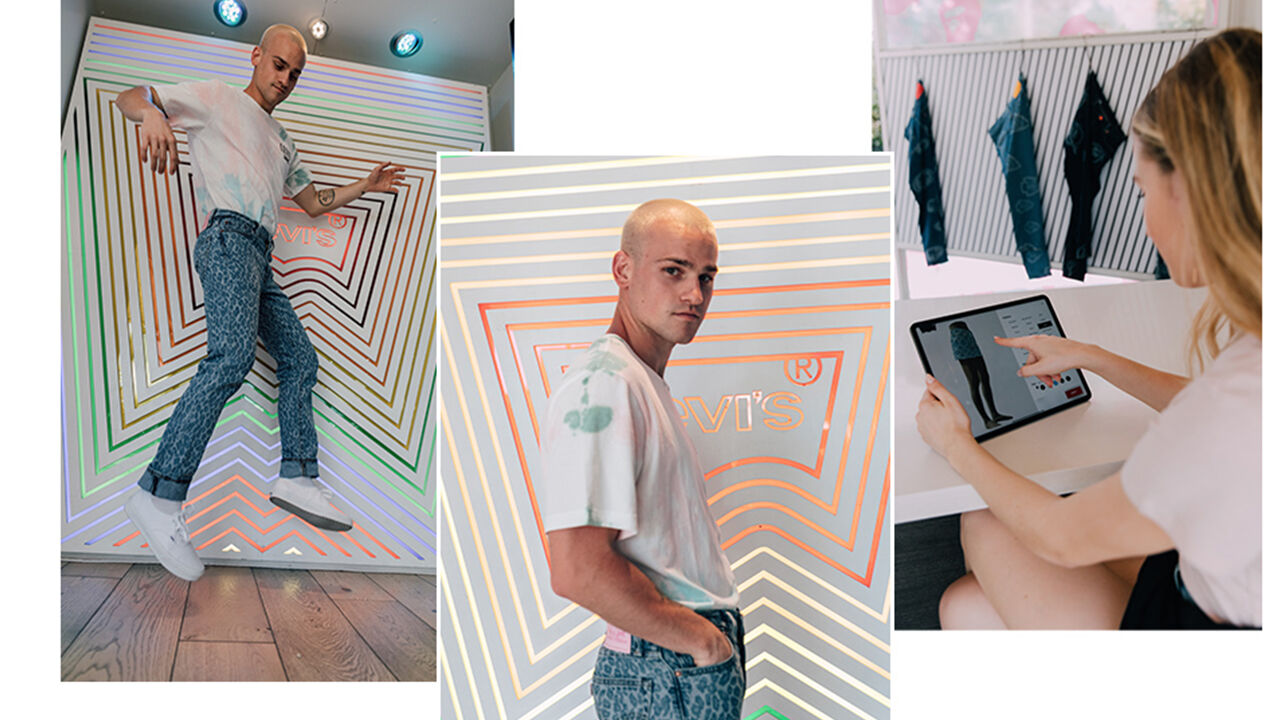
Social cCommerce on Youtube
Youtube’s lacking popularity when it comes to marketing and advertising is going to pivot in 2022 as creators and advertisers try to find a platform to move away from Facebook and to personalise the shopping experience. With live streaming and e-selling set to see a boost in 2022, Youtube is poised to make the most of this category. More brands will adopt Youtube as a key platform, using Youtube’s superior video and live-streaming software to boost brand connections and create a persona that lives and breathes their values.
And with Youtube as one of the original video-streaming platforms, it’s had the time to refine and create a platform that any creator can capitalise on.
Who did Social Commerce right on Youtube?
Youtube is still in the testing phase of its integrated shopping experiences, however early tests are incredibly promising. Simply Nailogical, a Youtube nail influencer, debuted her new nail polish collection to 2.8 million fans, and generated over 170K views.
This year, Youtube is also going to debut a week-long livestream shopping event.
Social Media Trend 2: Oh, Hey, It’s Me! (Or User-Generated Content)
Statistics
- The global user-generated content market size is expected to reach $18.65BN by 2028 and to grow at a CAGR of 26.6% between 2021 and 2028.
- 93% of marketers agree that consumers trust content created by customers more than content created by brands.
- User-generated content tops marketing tactics by influencing over 90% of shoppers’ purchasing decisions.
Overview
User-generated content is always a draw.
In 2022, it’s going to be one of the strongest assets that brands can use – and it’s going to be necessary for most brands.
We’ve talked a little bit about how important authenticity is to brand relationships. We’ve talked about the importance of having people talk about what you’re doing: free press, on the one hand, but also an unbiased opinion.
Face it. Even with your own best intentions, a message from your brand is going to be biased.
That’s not the case with user-generated content. In a year where authenticity and genuine content is king, user-generated content is especially important for brands who are struggling to build engagement and make people care about their product.
The power of social is stronger, and far wider reaching, than any other message system at the moment. It’s coming off a year of unrivalled, staggering growth, where social media was everything from a way of connecting to each other to customer care, a help line, and a shopping channel.
Real content, authenticity, and creators with credibility and the capacity to build lasting relationships are going to become a cornerstone of brand communication in 2022.
But it won’t look anything like the brand communication you’re used to. Memes, dances, songs, jokes: these are the things that carry on social media, and brands that can figure out a way of talking the social talk without compromising on their brand voice will see a definite uptick in how consumers relate to and engage with the brand.
User-generated content on Facebook
Brand love on Facebook is always tricky, however user-generated content might manage to fill in the brand love gap. The only problem: user-generated content isn’t really the kind of thing that Facebook manages to do very well.
If you’re interested in user-generated content on Facebook, our suggestion is to make use of the Groups. Brands who open up a Group can collect all their key consumers in one location, and build brand love within these pages.
Who did user-generated content right on Facebook?
Toyota’s ‘Feeling the Street’ campaign is always a masterclass in UGC done right. Over a period of six weeks, Toyota collected the best user content created on Instagram and makes it into standout Facebook ads.
An oldie but an excellent example, Toyoto’s 2016 campaign generated over 1.2 million likes, comments, and shares, and Toyoto also managed a 440% increase year-over-year in ad engagement.
User-generated content on Instagram
Instagram’s built for UGC: the tag function makes it easy to trace all content underneath a particular brand or hashtag, and Instagram’s focus on high-quality images makes finding repostable brand content really easy. On Instagram, engagement can be a struggle, so finding a key content creator is fundamental to benefitting from the user-generated content trend.
Whatever content creator you opt for, make sure to think in terms of continuous content. Opt for a content creator you can see working with over a long period of time.
Who did user-generated content right on Instagram?
Gymshark, a fitness brand, invited their fans to join in the #NHSSWeatySelfie challenge, where people who exercised and posted it on Instagram could raise £5 for every piece of Instagram user-generated content tagged.
Over 35,000 pieces of content were generated, and Gymshark raised £180,000 for Birmingham Women’s and Children’s Hospital Charities.
User-generated content on Tiktok
The duet feature is excellent for user-generated content that puts your brand front and centre, but it’s not the only way to capitalise on user-generated content. Tiktok’s creators are always looking for a good hook or a joke; the problem is that brands that want to make it on Tiktok should be prepared for a change in the way that they’re perceived.
Who did user-generated content right on TikTok?
Chobani, a yogurt brand, wanted to advertise their new Chobani Flip yogurt. They started a hashtag on Tiktok and tagged in influencers to spread the word about their new yogurt, and kicked off a competition where 25 winners could win a case of their new yogurt.
The campaign was a big success, generating over 8.2BN views for the #SwitchTheChobaniFlip challenge.
@mattpeterson_ Only eating @Chobani Flip for an entire day! Join the #SwitchTheChobaniFlip challenge for a chance to win a limited edition product! #ad
♬ Work It – Missy Elliott
User-generated content on Youtube
For longer user-generated content, Youtube is unbeatable.
It already has the history and the set-up to generate longer video, and the reach to make sure that audiences looking for a particular product or service can find what they’re looking for.
The base for all Youtube communications needs to be information. With the possibility of longer content, brands who market on Youtube need to make sure that their content is worth watching – especially if you’re going to opt for longer content. Think behind the scenes and how it’s made, detailed product reviews and walk-throughs, and documentary-style videos that walk a potential customer through every part of the product or service.
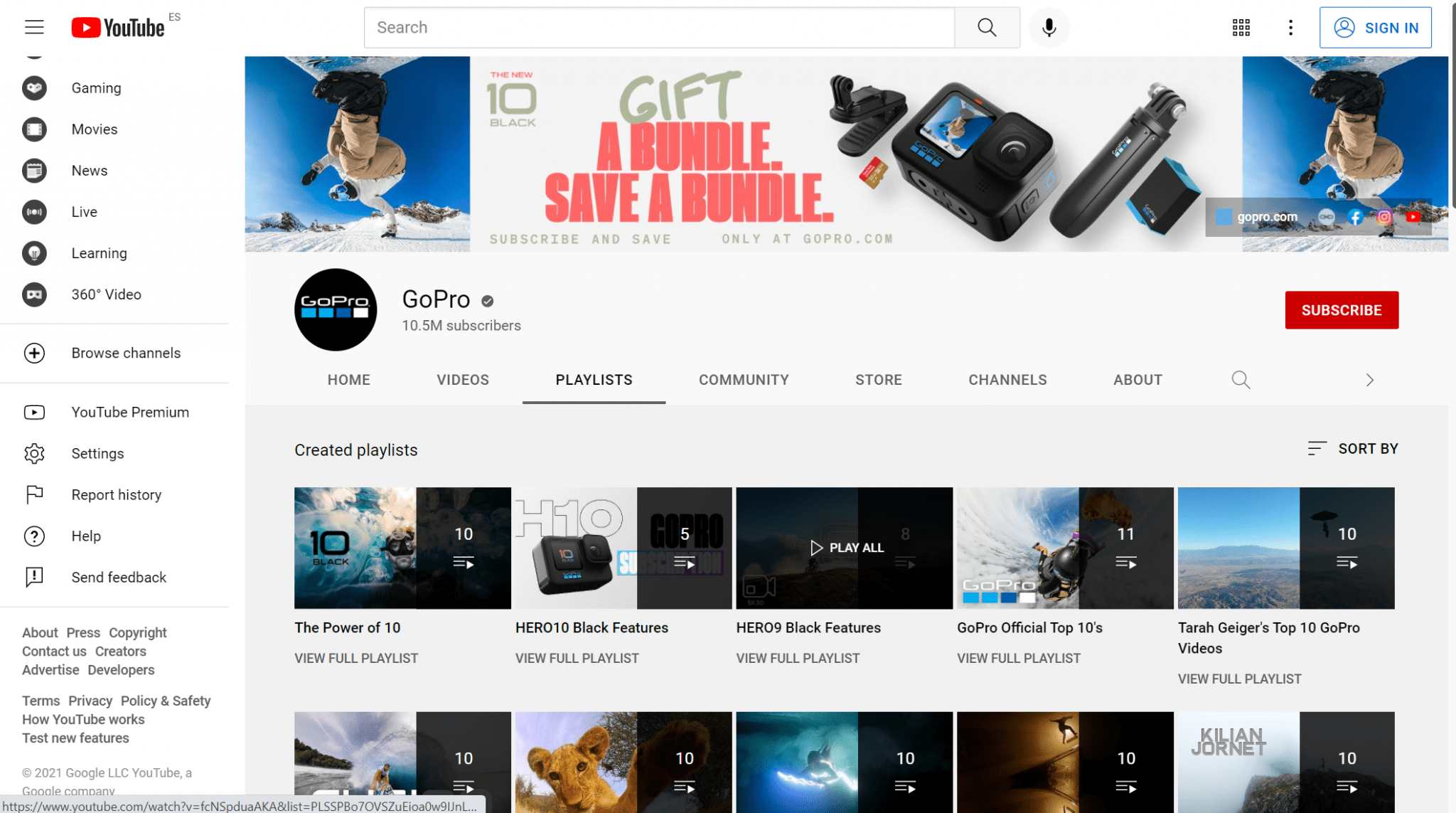
Who did user-generated content right on Youtube?
GoPro’s Youtube channel has been active since 2013, and is largely credited for pioneering the user-generated content movement.
GoPro has been incorporating videos from its fans into its marketing strategy since then, and its channel has since collected over 2,000 user generated videos and over 10.5 million subscribers.
Social Media Trend 3: Creators Are King
Statistics
- 89% of viewers trust creators’ recommendations on Youtube.
- The global influencing market value has more than doubled since 2019.
- 42% of marketers consider influencer marketing one of their top revenue-generating tactics.
Overview
You need to sell a product, a service, a lifestyle, or a brand.
You need a story, one that’s relatable and funny, one that your audience will resonate with.
To do that, you need to tap into creator culture.
Creators are everywhere. According to SignalFire, over 50 million people globally consider themselves creators and it’s time to start using them – whether or not they have the reach or the followers to compete with some of the biggest influencers.
We’ve spoken a little bit about micro-influencers before.
But there’s another step further: you need to make sure that the creator you pick corresponds to the platform you want to advertise on.
And you need to make sure the content you want advertised matches with your creator.
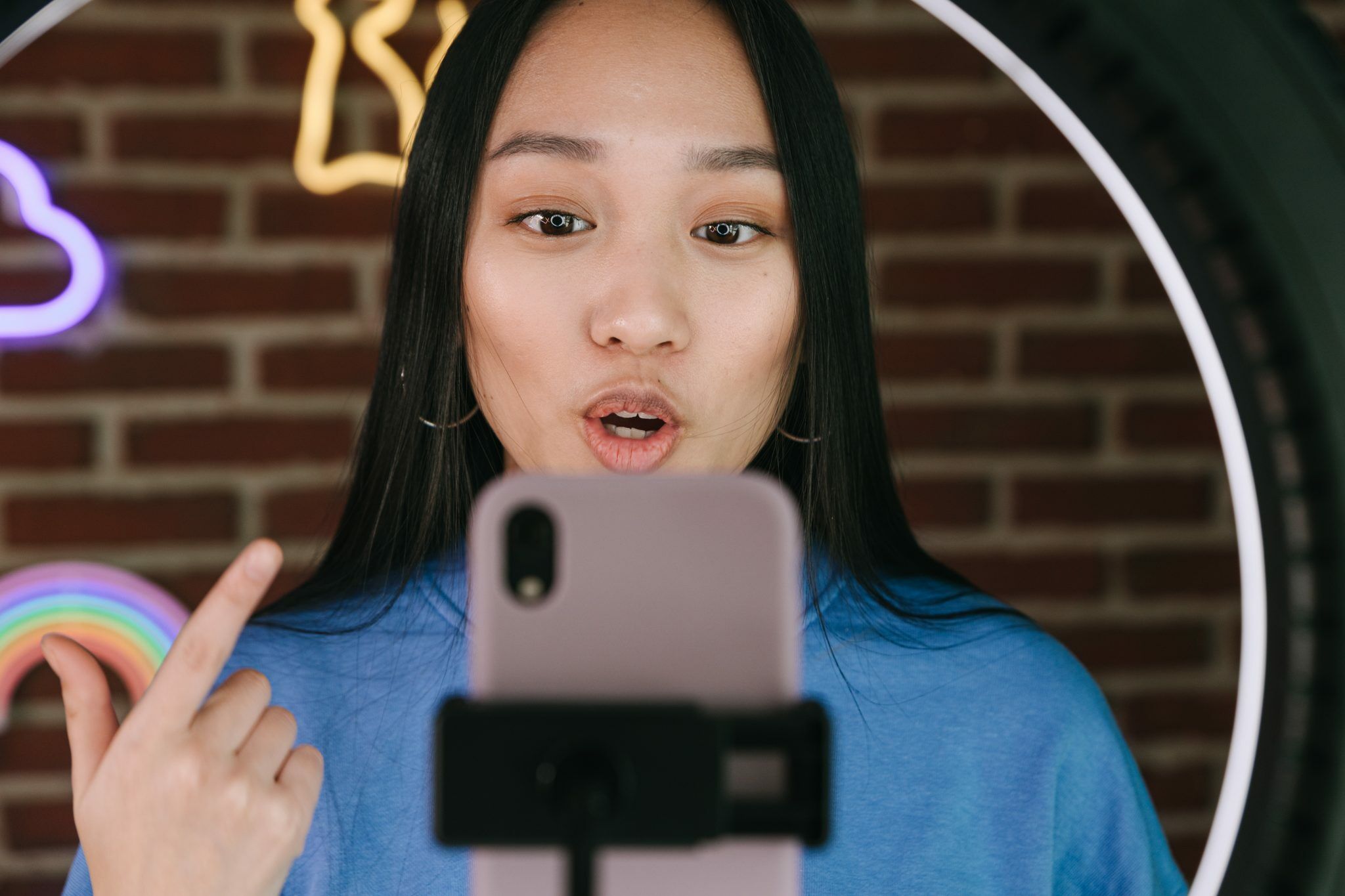
Creators on Facebook
Facebook is one of the oldest social medias, but its credibility is on the low side, especially after the previous year. Brands who want to advertise on Facebook can’t rely on a single creator; they need a multitude.
They need a community.
That solves the problem of credibility. With multiple creators making the same claim, it’s harder to disprove – and much easier to get across the multiple viewpoints you need for truly authentic marketing.
Who got it right with creators on Facebook?
Gymondo, an online subscription-based fitness and health coaching programme, wanted to increase its online subscription sales without increasing the cost per acquisition of its normal marketing activity on Facebook.
By adding influencers to its direct response campaign, Gymondo decreased cost per acquisition by 28% and saw an increase in engagement when using macro influencers.

Creators on Instagram
Think micro-niche. Think up-and-coming influencers with an unmatched style.
Content on Instagram is rife with filters and editing. It can all blend into more of the same, and you want your content to stand out, so make sure the creator you pick stands out for you.
This year, authenticity is key. Whatever micro-influencer you decide to work with, you need to have a deep understanding of the content that they already put out. You need to know where your product fits into it.
Any age works for Instagram. Just avoid the big names.
Who got it right with creators on Instagram?
To advertise their latest in-house perfume collection, Sephora, a makeup brand, launched a campaign with neuroscientist Jessica Herrington and Roman Bratschi, Instagram creators that could create digital, sensory experiences to help sell their products when stores were shut down and consumers were unable to shop in-store.
They saw increased ad recall with the creator assets and a higher lift in purchase intent following the campaign.
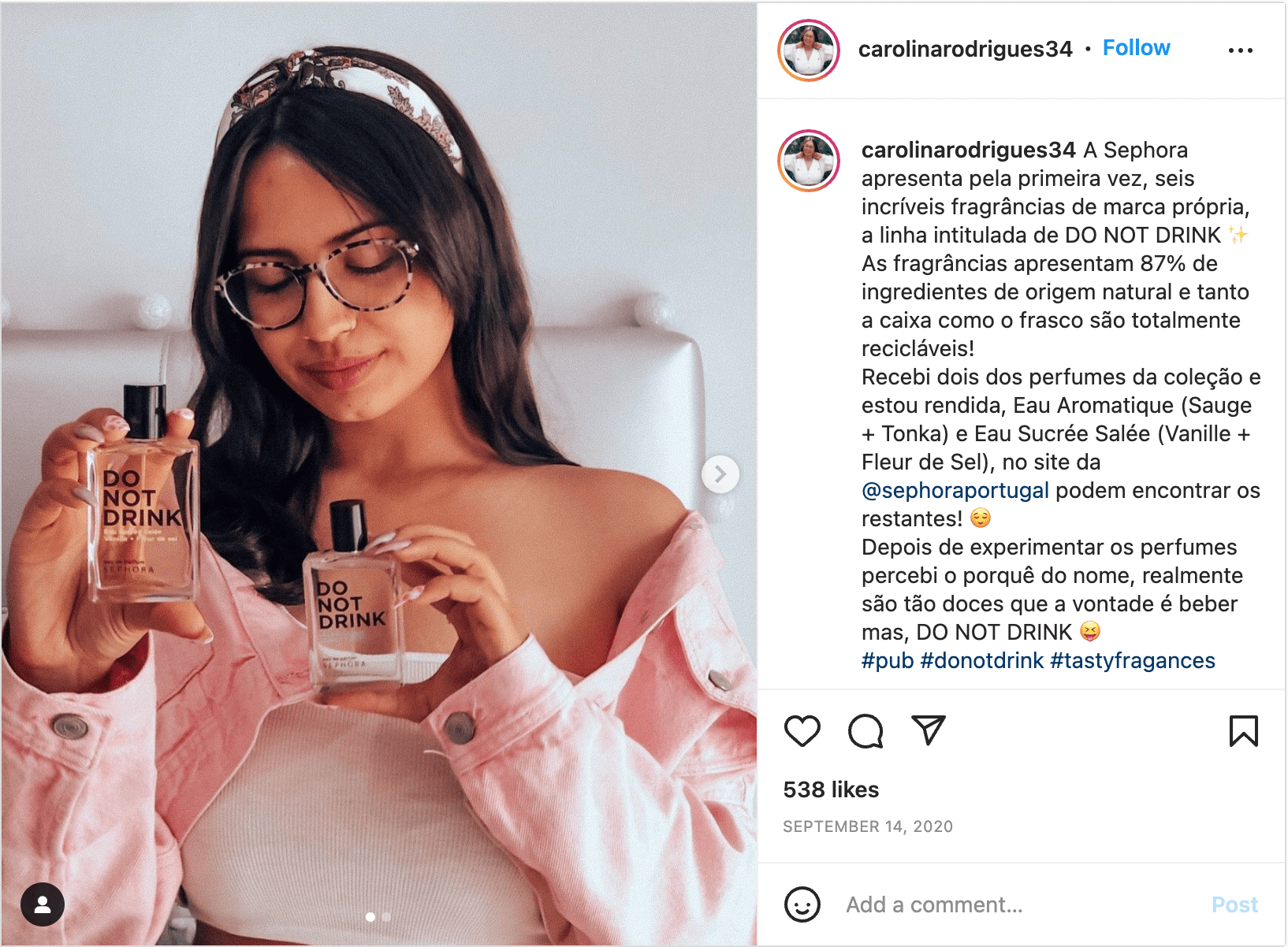
Creators on Tiktok
Here’s something for you: Tiktok is the opposite.
When you advertise on Tiktok, you should absolutely look for the biggest name you can get.
However, keep in mind that creator content on Tiktok looks different. Your brand needs to be bulletproof if you’re going to throw the gauntlet to the creators on Tiktok, since any little gap or weakness will be found and exploited. Small businesses, brands with a quirky customer-facing side, and companies who understand that marketing should be fun will do best here.
On Tiktok, your biggest asset is going to be engaging with your creators. Tag, comment, and spread the message wide. The bigger the community connection, the more people will want to hop on the trend.
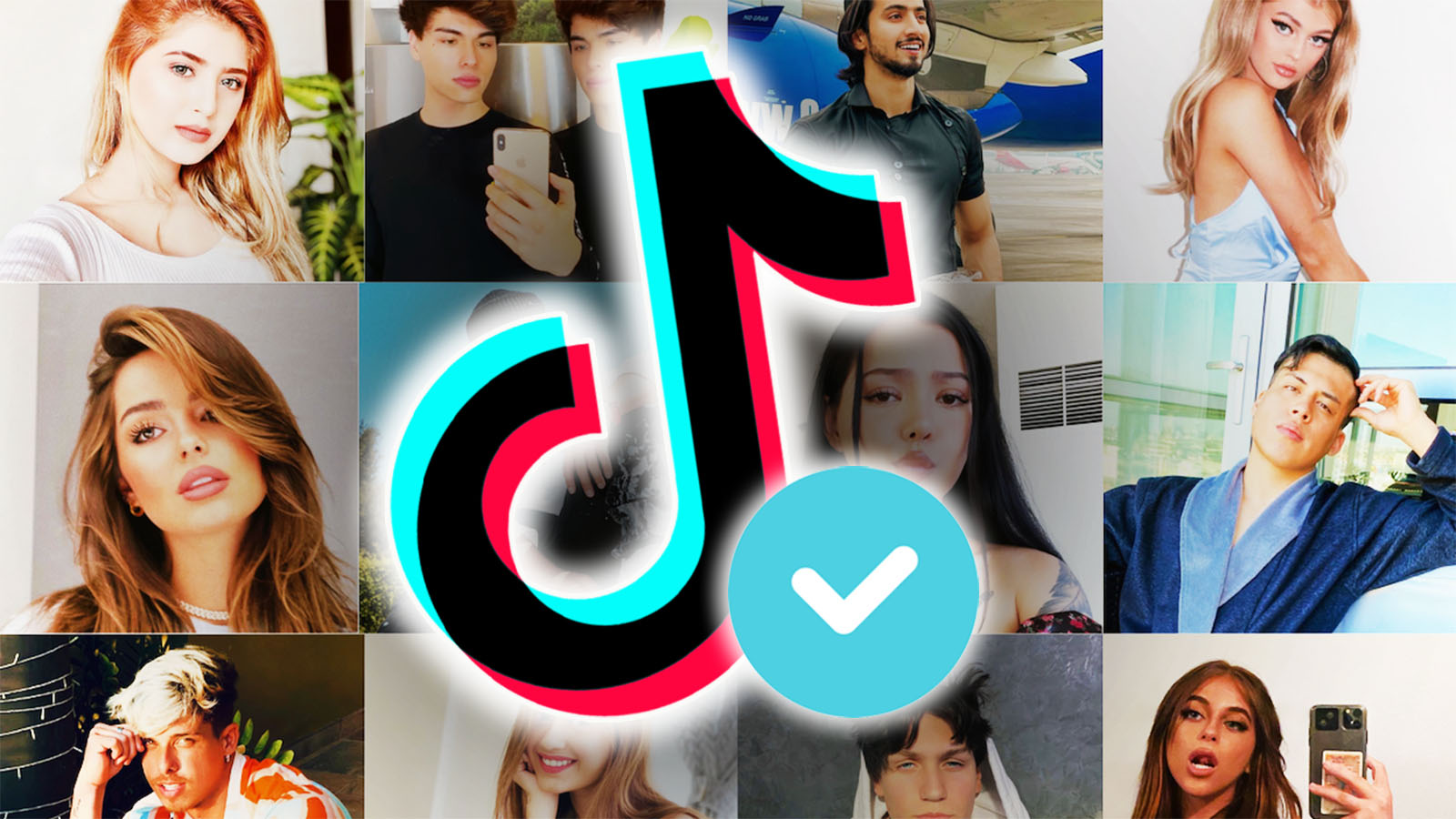
Who got it right with creators on TikTok?
Dunkin Donuts saw an opportunity to capitalise on rising star Charli D’Amelo’s TikTok fame. D’Amelio, who was consistently seen in her videos holding a Dunkin Donuts coffee, posts videos on her TikTok of popular dancing and her Dunkin order.
By hiring D’Amelio as a brand ambassador, Dunkin Donuts already saw a boost – but they wanted more.
In the early fall of 2020, they released a limited edition ‘the Charli’ drink, created by D’Amelio herself, and immediately saw a massive boost in their third quarter sales, a 57% increase in app downloads ,and a 20% increase in cold brew sales.
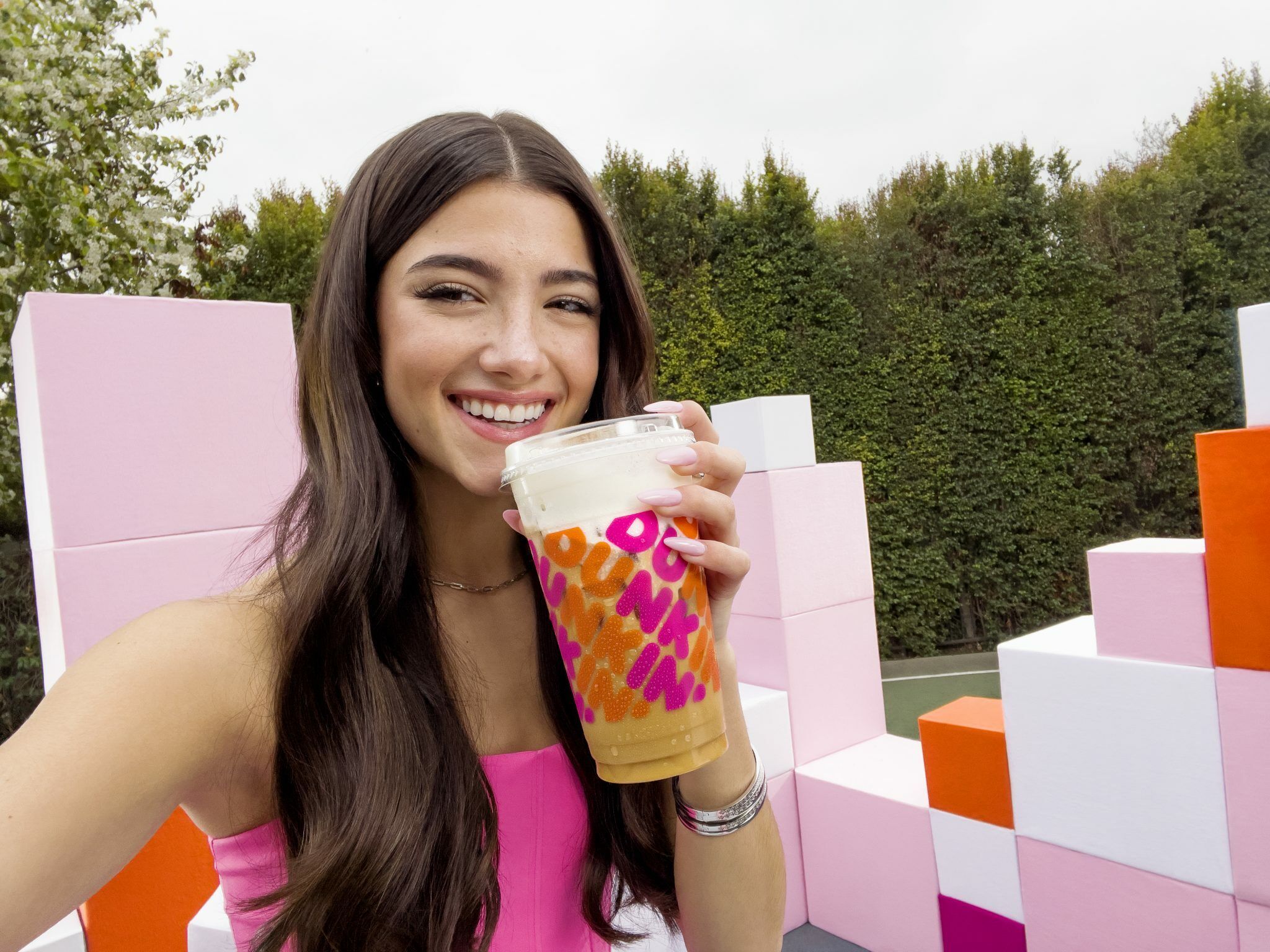
Creators on Youtube
Youtube is a little weird when it comes to creator content. Most people who go on Youtube to watch creators don’t necessarily do it for the products or services they talk about.
To capitalise on the creator trend on Youtube, you need a creator whose editing style fits into what you want to say – and you’ll want to go unconventional. Don’t opt for the standard: branch out, see what collaborations you can come up with to give your brand an extra dimension.
This doesn’t mean you should find a creator whose content is at odds with your product.
But it does mean thinking deeper about what associations you can build for your brand that go beyond the standard audiences.
Who got it right with creators on Youtube?
LG Electronics wanted to increase their Youtube reach for the launch of a new television, and partnered up with HYPR to find an influencer to collab with. HYPR suggested Lewis Hilsenteger, a Youtube influencer most known for his ‘Unbox Therapy’ channel where he gives product reviews and unboxes things.
With Hilsenteger on board, they provided a television for him to giveaway on his channel and provided enough content for Hilsenteger to run through all of his social media, including Facebook, Twitter, and Instagram. Youtube was the most popular platform, with 385,069 unique views, but the campaign attracted the attention of over four million people in total.
Social Media Trend 4: I’m Listening
Statistics
- Digital customer service interactions are projected to increase by 40%.
- 79% of consumers expect a response from a brand within 24 hours; 40% expect one within one hour.
- There has been a 51% increase in customer service requests since the pandemic.
Overview
Everyone needs connection, and everyone needs it immediately.
Especially your customers.
The early days of lockdown had stores shutting down wholesale and online web-stores springing up overnight to take over. That was good: the niche for online shopping has grown since, and the shopping experience in general has been streamlined.
However, it also highlighted a particular eCommerce issue that companies struggled to fix.
If your store is entirely online, and your team is working from home, who’s answering your customer support questions?
Brands that went digital in 2020 in a panic to turn a profit during the pandemic bit off more than they could chew, and they noticed it immediately. Customers who received products they were less than thrilled with couldn’t get into contact with the company fast enough.
But the company sometimes took days to reply.

We live in the age of immediate gratification. Shows are downloaded to our phones and play without a single ad break. If we have a question we want answered, food we’re craving, a particular song we want to listen to at that precise moment, we can get it immediately.
Social media can’t just be for advertising anymore.
In 2022, social media is going to pivot into use. Customer expectations are higher than ever, and the ‘reply within 48 hours/two business days/one week’ response doesn’t cut it anymore.
You have a perfect customer connection vehicle already there.
Use it.
Customer service on Facebook
With the majority of businesses using Facebook as their ‘corporate’ social media, it’s not surprising that this is one area where the trend really shines. Putting a chatbot on Facebook to answer customer questions is necessary, not just because people expect it: it’s also a good way of adding a much-needed depth to normal social media use.
Facebook customer service has to be detailed. A good rule of thumb is to think of every possible question that a customer can have, and to programme a response that answers that question – even if it seems silly.
This trend works best for more corporate brands, the ones whose following on Facebook is already substantial, or who are looking to break into a better way of using social media. It also works for brands who can’t have much in the way of user-generated content, or whose products and services aren’t photographable.
Information-heavy, dedicated, and immediate: that’s what you should strive for for Facebook customer service.
Who got customer service right on Facebook?
Zappos, a clothing retailer, is so serious about fast and efficient customer service that they’ve made it a cornerstone of their business. Their Facebook page’s About section says: ‘we’re here for you 24/7’, and in 2019, they really lived up to their name.
When they sent out the wrong size shoe for a bachelorette party by mistake, Zappos overnighted the right pair of shoes, added a wedding survival kit, and included a personal note from an employee, leaving one happy, satisfied customer, and a lot of generated goodwill.
Customer service on Instagram
Instagram can go a little more personal with this trend. The darling of small businesses and best-friend brands, Instagram isn’t tied to the same formality that Facebook is, and you should use it to your advantage.
Answers on Instagram should be informal, and should give a little more than just information. This is an excellent platform for brands that cater to the aesthetic: home, beauty, crafts, skincare, makeup.
Give advice. Give more than you’re asked. Make sure each customer request feels personal.
A bot can be programmed for this, but we also recommend a dedicated customer service agent for those requests that just can’t be anticipated.
Who got customer service right on Instagram?
Erigo, an Indonesian menswear brand, wanted to increase sales and reach new customers during the COVID-19 pandemic, when most stores were shut. They also had to contend with Ramadan, as the campaign would run during April and May.
Targeting men who had never interacted with Erigo before, they created an Instagram Direct campaign where clicking on the ad connected the consumers with a personal stylist, who could give them advice in real-time. Every person who clicked on the ad would also get a direct link to Erigo’s Shopee page, and a discount code.
Over six weeks, they saw 1.9X greater basket sizes from customers who clicked to Instagram Direct, managed to assist over 8,000 consumers, and increased brand awareness.

Customer service on Tiktok
Tiktok customer service is fun.
And it’s a brand-building investment.
The nature of Tiktok’s bite-sized content means that any customer service queries have to be taken at face value, and it’s hard to programme a bot to answer customer questions. That said, using Tiktok as your customer service platform gives you the opportunity to emphasize how your customers can relate to your brand.
It’s going to be impossible to answer every customer question. We still recommend you have an alternative way of reaching out to your customers, otherwise you’re going to spend all your time crafting response videos.
That said, for the ones you do answer, make sure you answer them well. Talk about your products. Show behind the scenes footage. Tiktok is the platform where that sort of content skyrockets your popularity.
Don’t waste it.
Who got customer service right on TikTok?
Pair Eyewear, a direct-to-consumer eyewear brand, uses Tiktok to answer customer service questions, from what type of lenses their glasses come with to how long it’s going to take to ship a particular product.
Since joining Tiktok, they’ve seen at least 10% of its sales coming from Tiktok every month, and can attribute over $400,000 worth of sales from TikTok in a month due to organic posts.
@paireyewear We’ve got the secret to stylish eyewear. ? #TheLarkin #PairEyewear #WearPair #tiktokcomedy #tiktokmademebuyit
♬ original sound – George Jnr McKeon
Customer service on Youtube
We’ll be honest: answering customer questions on Youtube is not the best use of this platform.
For one thing, Youtube is built for longer content. For another, the customer queries you’re going to get on Youtube might not be the ones you want to answer publicly.
However, there is a way.
Customer questions on Youtube where you can extract a sizeable amount of information can do well, especially for brands that focus on DIY, home improvement, gaming, and makeup. It doesn’t have to be a 30-minute video, but a ten or fifteen minute video that goes into how to use a product can help cut down the customer service questions you do get.
Batch your customer service questions into groups. Figure out the ones that are asked most frequently, the ones that you will keep repeating over and over again.
Make a step by step video explaining how to use the product. You’ll be surprised at how many people will appreciate the extra guidance – especially if your products can be a little confusing to figure out how to use.
Who got customer service right on Youtube?
Skullcandy‘s Youtube, although in a niche category, is popular for the in-depth advice they offer to their consumers. With over 147K subscribers and views heading into the millions, Skullcandy’s Youtube channel serves more as a community hub than brand advertisement.
Their troubleshoot and user guide categories are the most popular, each generating high viewing numbers.
Social Media Trend 5: Into the [____]-Verse
Statistics
- 75% of consumers expect retailers to offer an augmented reality experience.
- Conversion rates for AR engagement are up by 90% post-COVID.
- Brand recall increased by up to 70% after using AR for engagement.
Overview
Augmented reality. Virtual reality. Multiverse. Metaverse.
Real life into virtual.
Technology has come a long, long way since the first cellphone, the first webpage, the first email sent to the first internet user, to the point where the tech we use now and the tech (most) of us grew up with look like they’re from different universes.
And that’s only going to get more prominent as technology improves.
Augmented reality and virtual reality have already been used for other aspects of marketing. In 2022, they’re going to get bigger, especially for brands that can take advantage of ‘try before you by’ filters. From trying on lipsticks virtually to taking a walk through a custom-crafted brand park, experiential doesn’t have to be in real life anymore.
Experiential lives in the virtual.
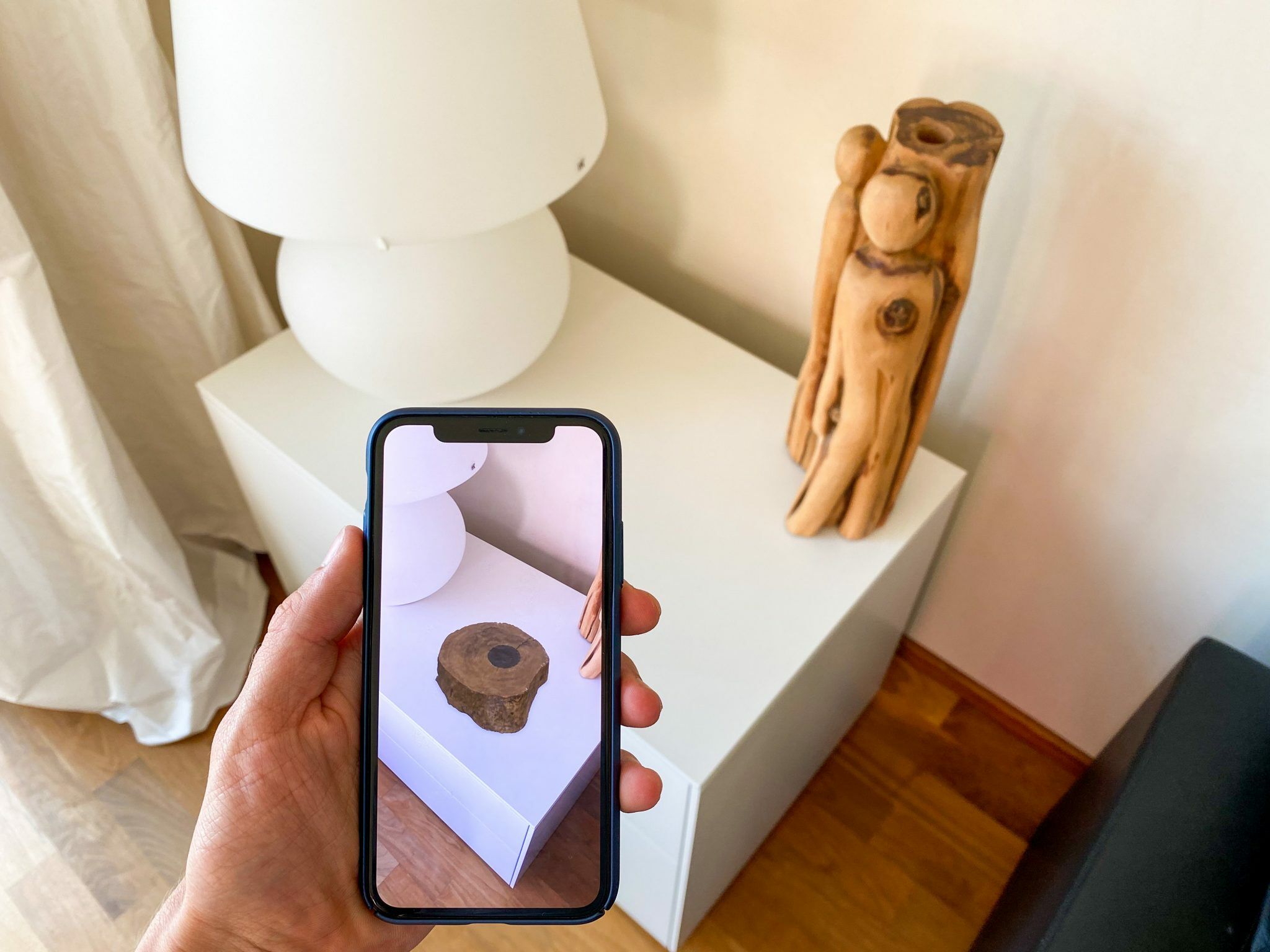
AR & VR on Facebook
Facebook has rebranded as Meta.
Their reason: to bring forward a different way of online experiences. Of living online. Of being.
While the definition of the metaverse has yet to be understood, as an early pioneer, Facebook is going to be the platform to watch for the metaverse. We’re still a few years out from seeing the full extent of what can be done, and from seeing brands engage with it – but brands who start planning their metaverse expansion from now can be among the first.
Think big.
But until then: you can’t really go wrong with augmented reality filters.
There’s already been some successful AR campaigns on Facebook that have really elevated the possibilities of what can be done with marketing. AR filters are also incredibly compelling: it allows consumers to experience a product or a service without the risk of purchasing, and usually results in higher conversions.
Brands that sell experiences – travel, technology, food – will perform the best with AR filters. However, it doesn’t mean other brands won’t. If you can sell your product as an experience, AR filters can help you make that experience memorable.
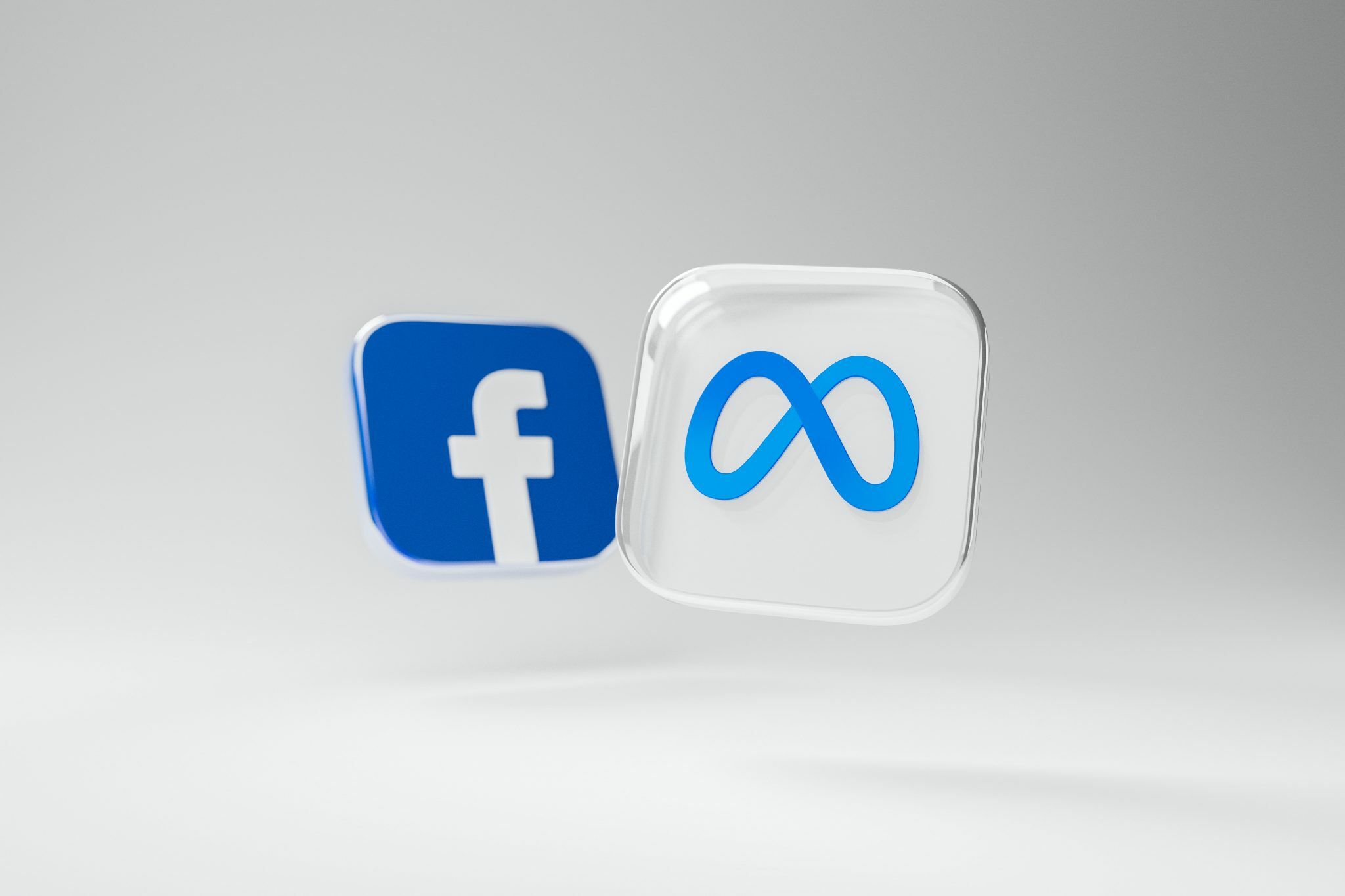
Who got AR right on Facebook?
Made.com, a UK-based online furniture retailer, wanted to use new technology to increase brand awareness and attract new customers – and also take advantage of the lockdown, which had prevented them from opening their stores.
They added an augmented reality experience that allowed people with iOS devices to position furniture inside their homes.
The AR filter increased ad recall by 40%, purchases by 2.5X, and also saw an added 63,000 visits to the website via the AR experience.
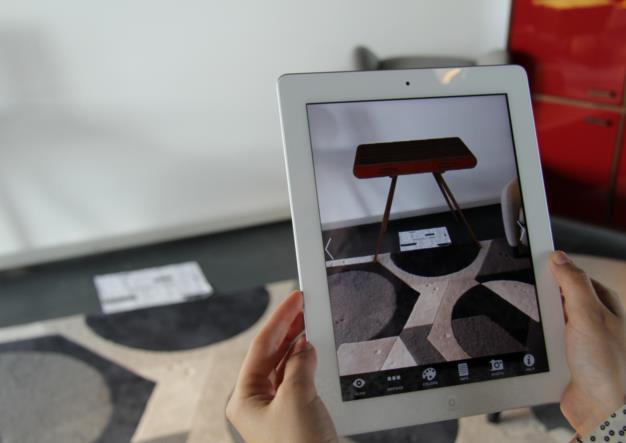
AR & VR on Instagram
AR and VR on Instagram is sophisticated, but that’s not a surprise. It’s owned by Facebook, after all.
However, AR and VR on Instagram is far more intensive than what Facebook has currently achieved. Brands that opt for VR and AR on filters can really share a product, service, or an experience at a deeper level than what’s currently achievable on Facebook – and it can bring a lot of nuance and depth to brands that have an Instagram, but struggle to engage with their consumers.
Beauty brands and institutional brands can especially do well using this trend – particularly if they’re a little bit niche. Other brands can also benefit, but you have to take an angle that your website and other socials can’t fit, and the more beautifully done, the better.
Who got AR right on Instagram?
Samsung wanted to increase awareness of its new Neo QLED 4K and 8K televisions in Jordan and Iraq during a time when COVID-19 had closed all retail stores.
They created a series of interactive ads using an augmented reality filter which allowed consumers to place the television inside their own home.
The campaign ran from July 5 – 21st and saw an increase in ad recall and brand favourability.
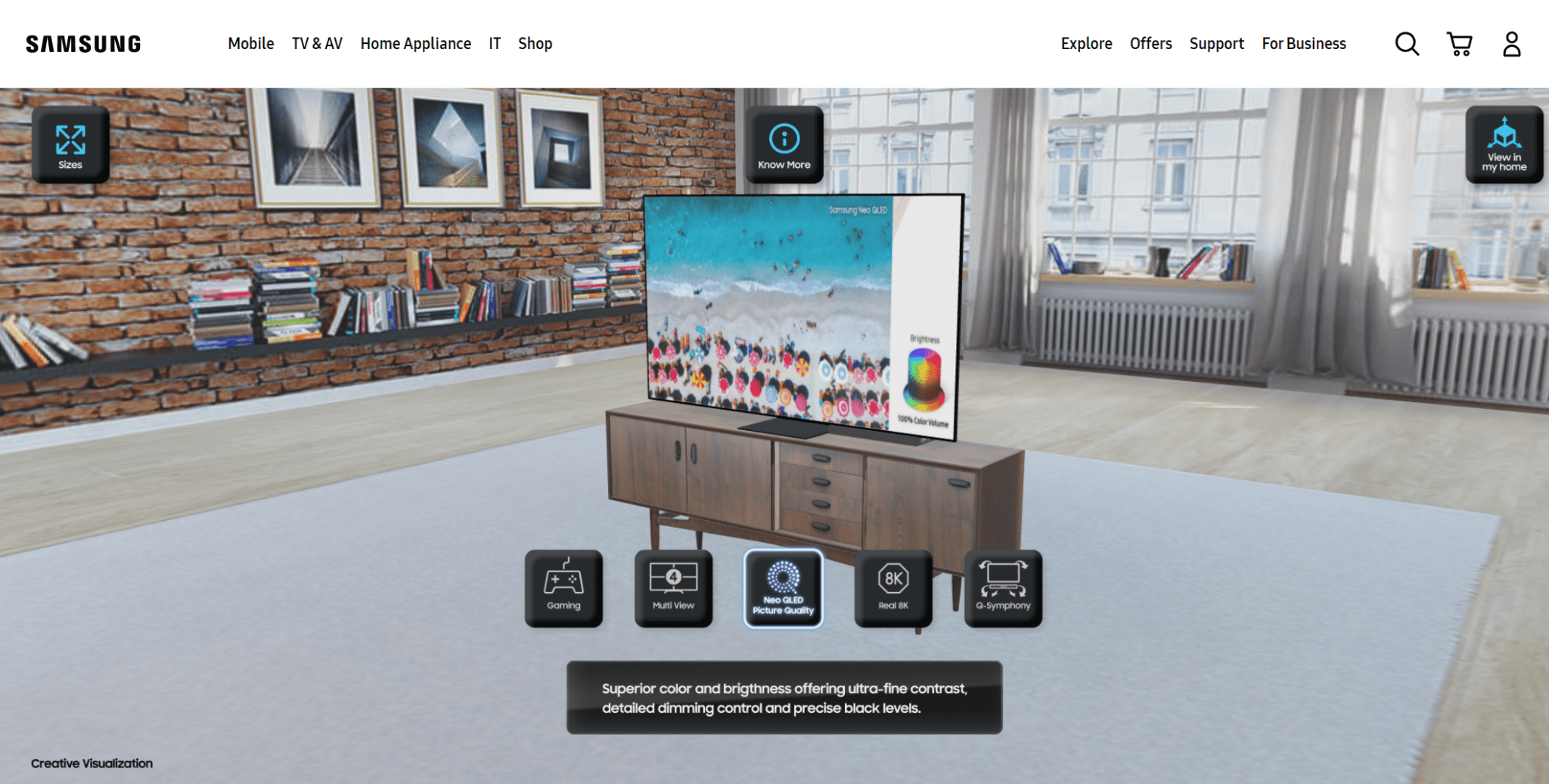
AR & VR on Tiktok
There’s been some early adoption of AR for TikTok, but more is always better – especially for big, ‘older’ brands that want to attract a newer audience or the younger generation. The innovation and the experience of seeing a familiar brand engaging with AR and showing a different facet of the product can help widen the audience demographic and increase the brand’s reach.
Who got AR right on TikTok?
Netflix Germany wanted to raise awareness for its new TV show: “Sing On! Germany” within the German market.
It partnered up with Tiktok to release a branded hashtag challenge, inviting the TikTok community to send in Karaoke videos. To further incentivise people to take part, they used an augmented-reality filter to simulate a karaoke booth for deeper immersion.
The campaign generated over 600 million views in ten days, and increased awareness for the show massively.
@electra_pain Anzeige | Ich liebe Karaoke ? Ob Gesangstalent oder nicht, der Effekt macht echt Spaß ?? Bin gespannt auf eure Videos! ? #NetflixDE #SingOnGermany
♬ Originalton – Electra Pain
AR & VR on Youtube
Youtube have had AR filters in ads since 2019, mostly circled around the ‘try it’ beauty feature that corporations such as MAC have also included on their website.
There hasn’t been much more development in Youtube AR or VR ads since then.
We predict that DIY and home improvement brands can definitely generate a buzz if they advertise using AR filters on Youtube, but given that Youtube’s ad policies have started to generate a negative buzz across the internet, consider advertising on Youtube very carefully.
There is such a thing as bad press.
Who got AR right on Youtube?
Youtube has come late to the augmented reality campaign game, with their first branded effort releasing just the previous year: a virtual makeup try-on to run right alongside your favourite beauty influencer.
The earliest campaign for augmented reality on Youtube was run by MAC Cosmetics, who allowed fans of Roxette Arisa to try on the same products that she was wearing in her video.
Early results show that 30% of viewers enabled the AR experience in the Youtube iOS app, as well as spent over 80 seconds trying on lipsticks.
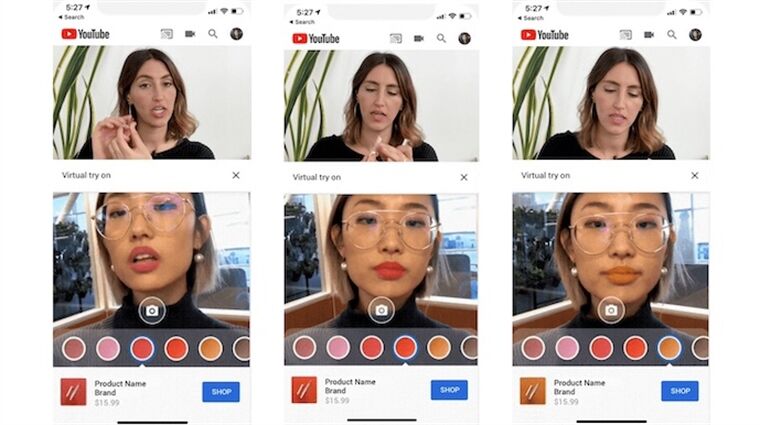
Coming Soon: Web 3.0
There are more trends en-route for 2022, but they’ll take a while to start appearing. As we said in our marketing trends blog, trends aren’t contained to a specific year, and they don’t start at the same time.
Web 3.0 is something we’re going to see more of in 2022. It’s going to impact the internet on a level that we haven’t even anticipated – we’ve only just started noticing how far-reaching Web 2.0 is.
But it’s happening.
And you need to be prepared.
Why Web 3 matters ?
— Chris Dixon (@cdixon) September 26, 2021
What is Web 3.0?
When we talk about blockchain, the metaverse, and NFTs, we’re talking about Web 3.0. We’re talking about a web controlled by, and designed by, the people rather than by big tech corporations, governments, or brands. We’re talking about an internet that’s open and transparent.
We’re talking about a decentralised internet where users can control every tiny aspect of their digital lives: from how they see their search results to what kind of recommendations they get.
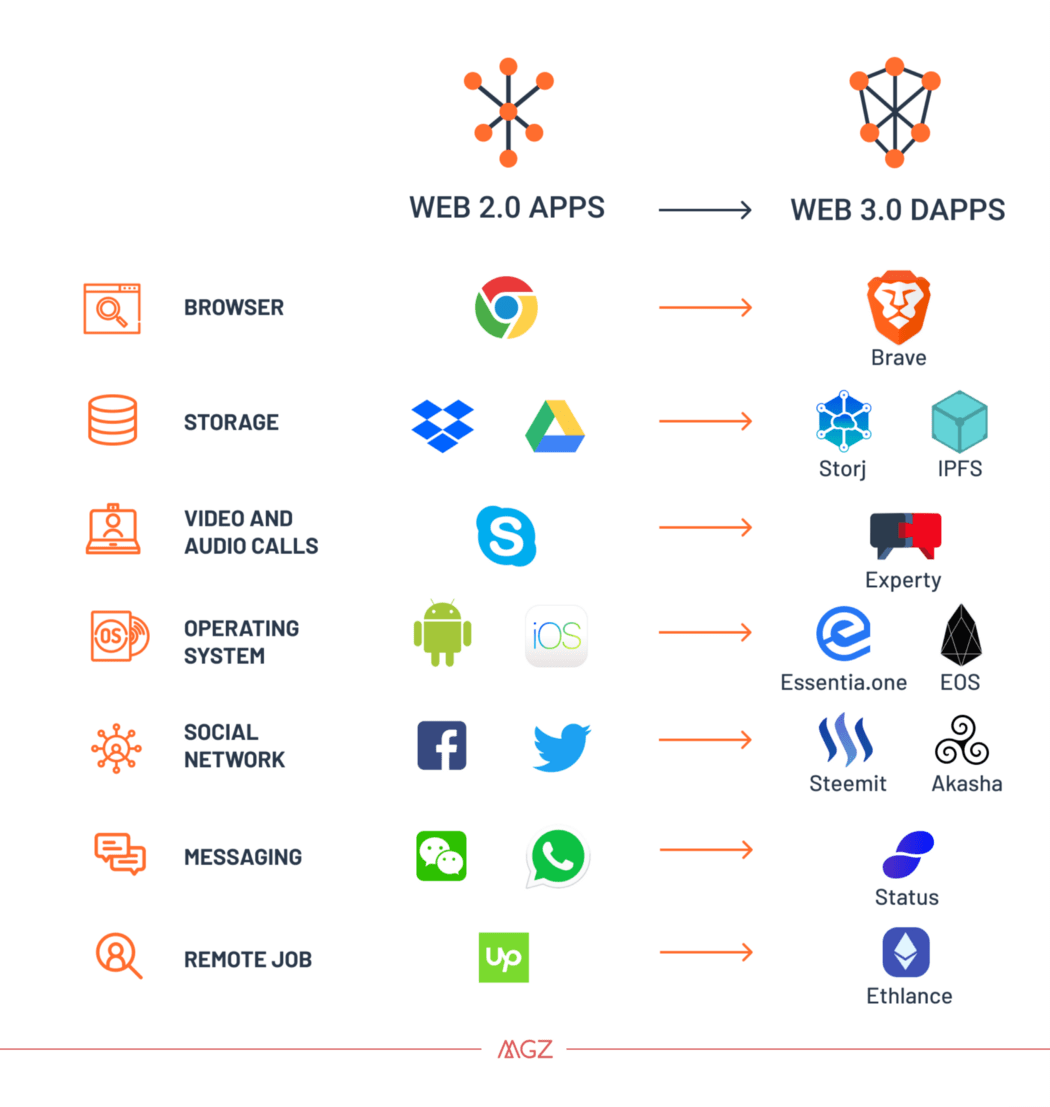
How is web 3.0 going to affect marketing?
The key quality of Web 3.0 is freedom.
That means freedom from monitoring, freedom from control, and freedom from advertising. It means an internet that’s similar to Web 1.0: a massive information resource accessible by everyone without someone at the centre controlling it all.
For marketing, this is going to affect the way brands have to interact and communicate with their consumers. Their audiences are going to shrink, even as their reach is going to grow, and they’re going to need to invest in the right ways to talk online to attract consumer attention. The days of addressing consumers ‘at large’ and managing to reel in one or two by accident are over; with Web 3.0, brands have to segment their audiences and address based on individual characteristics.
There’s also going to be a shift in how brands talk. Static ads will drop in popularity as hybrid spaces grow more and more complex, and virtual-real experiences will take over from segmented experiences that are either virtual or real. Furthermore, convenience is going to lead to multi-channel apps that can fulfill all a consumer’s needs without the need to go bouncing between different locations.
What do we need to keep in mind about web 3.0?
This has already started.
We’re not kidding.
Web 3.0 might take a while to happen in the way we envision because the technology and infrastructure needed aren’t ready yet.
But the mental shift has already happened.
Brands have become more than brands. Consumers want more than just products. They want to engage with and talk to companies that understand them, that have their best interests at heart, and that want to do better. Brands who can start to move towards this from now are ready to take on Web 3.0 when the technology is ready.
Brands who aren’t, need to catch up, or risk being unable to once Web 3.0 rolls around.
And it is coming. Sooner or later, your brand has to change.
You might as well do it now.
Conclusion
Social media marketing has come a long way from what we’re used to. Regardless of which platform you use, it’s hard to advertise nowadays without the traction and the reach you get from social media.
It’s an investment. It’s a tool.
It’s necessary.
But whether it’s useful to you or not depends on how well you use it, and how much time you spend growing your audiences.
We’re heading towards a point where a digital presence is necessary to connect with your consumers, and where your consumers are located all over. Whether that’s going to be social media for you is not our call.
But we think it should be.
And if you’re struggling to figure out how to make the best use of the platform you’re on, we’re happy to guide you through it.
Want to read more marketing trends for 2022?
Here are a few more resources we’ve put together, with more on the way:





